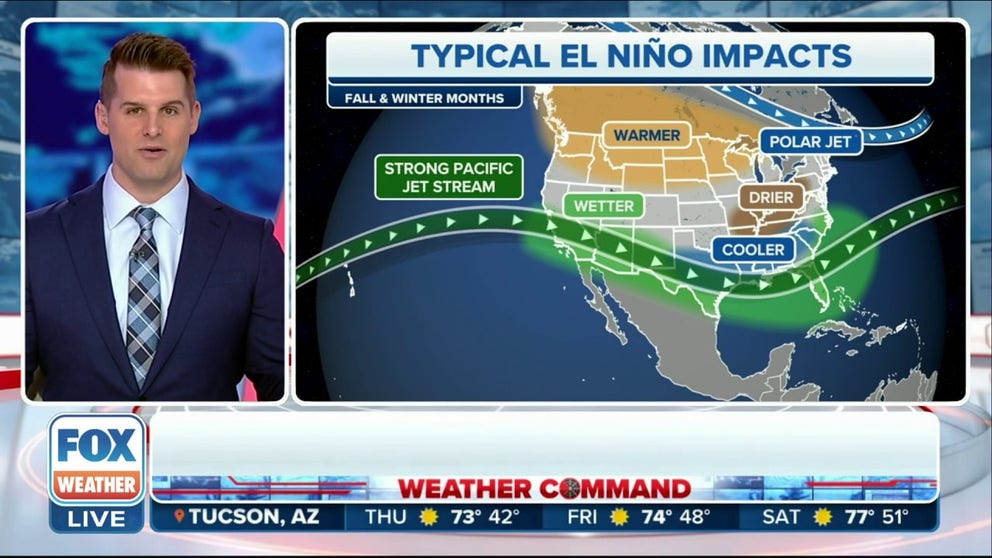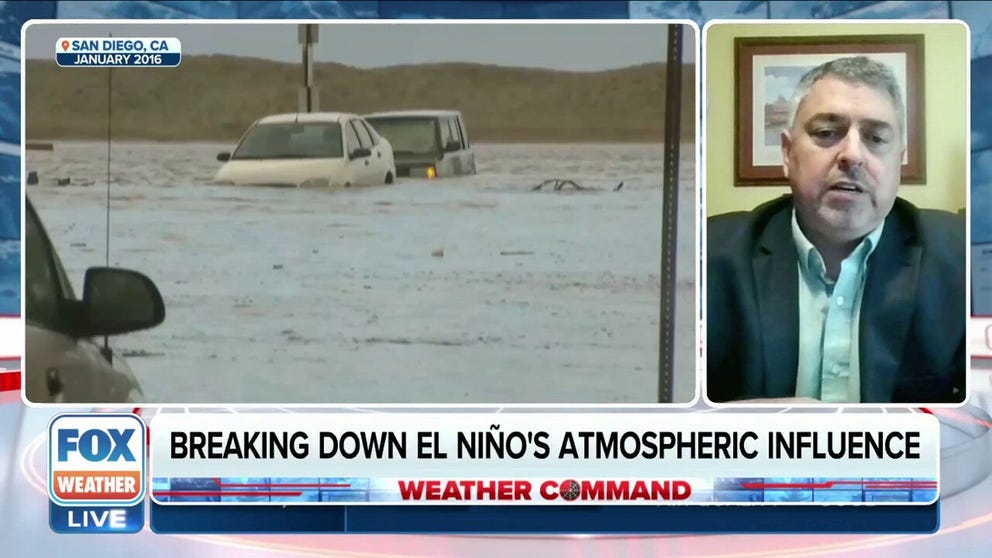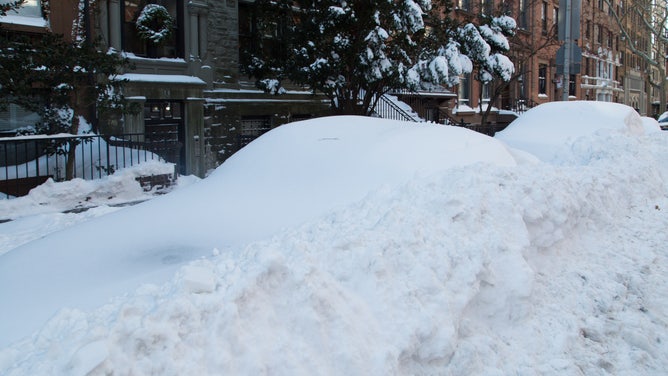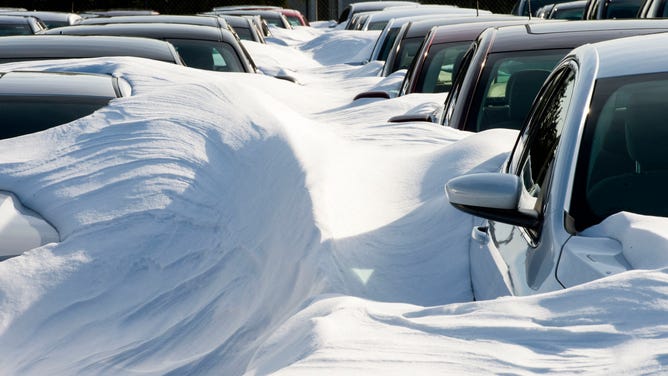El Nino’s odds for ‘historically strong’ event increase; could linger through spring
Sea-surface temperature anomalies in the central tropical Pacific Ocean, where El Niño thresholds are calculated, reached 1.8 degrees Celsius (3.2 degrees Fahrenheit) above average in the October measurement, keeping this event squarely in the "strong" category.
Odds of historic El Nino increase for this winter
NOAA's latest outlook on El Nino now gives a 35% chance of a "historic level" El Nino with high odds some form of El Nino sticks around through the spring.
WASHINGTON – What was already a strong El Niño event is getting stronger, and the odds of it reaching "historic" levels have increased for the winter, according to NOAA’s latest update on the El Niño-Southern Oscillation (ENSO) cycle.
Sea-surface temperature anomalies in the central tropical Pacific Ocean, where El Niño thresholds are calculated, reached 1.8 degrees Celsius (3.2 degrees Fahrenheit) above average in the October measurement, keeping this event squarely in the "strong" category. Other areas farther east in the Pacific have reached 2.2 degrees Celsius (4 degrees Fahrenheit) above average.
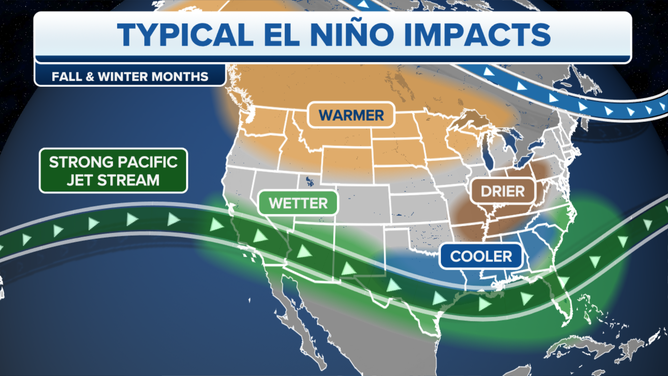
Typical El Niño impacts become more likely with a strong or historic event.
(FOX Weather)
WHAT ARE THE EL NINO AND LA NINA PATTERNS?
NOAA’s latest forecast now indicates "strong" El Niño levels have a 55% chance of lasting through the winter, and there is a 62% chance of general El Niño conditions lingering well into spring.
"The reason that's important is those sea-surface temperatures control where normally large thunderstorms are, what we would call deep convection is," Dave DeWitt, the director of NOAA's Climate Prediction Center, told FOX Weather. "And that deep convection actually has a large influence on the jet stream. And when you have an El Niño event, the jet stream tends to shift south and east of its normal pattern. And that's how it has major impacts over the U.S."
In addition, NOAA forecasters indicate there is now a 35% chance of reaching "historically strong" levels, also known as "super El Niño," deemed at 2 degrees Celsius (3.6 degrees Fahrenheit) above average.
El Niños have only reached those levels three times before since 1950.
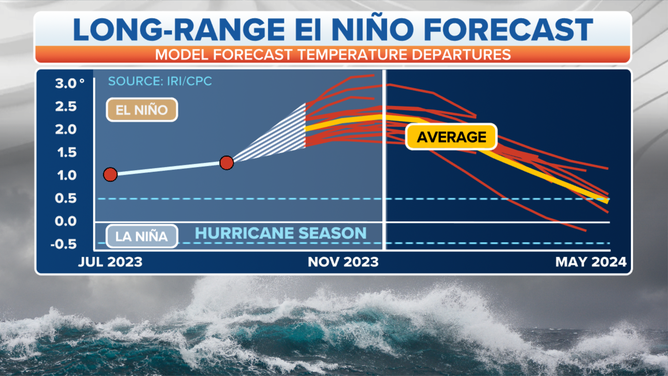
"When we have a stronger El Niño event, those storms and circulation patterns are typically stronger, meaning that this can have a larger influence on the jet stream and a larger influence on weather in the United States," Marybeth Arcodia, a research scientist at Colorado State University, told FOX Weather during an interview in October.
Mixed signals on how strong El Nino impacts will be
Dozens of computer models are run with different variations to determine the status and predict future cycles of the ENSO, but these computer outputs are rather inconclusive in saying the 2023-24 El Niño event will ever reach the significant threshold.
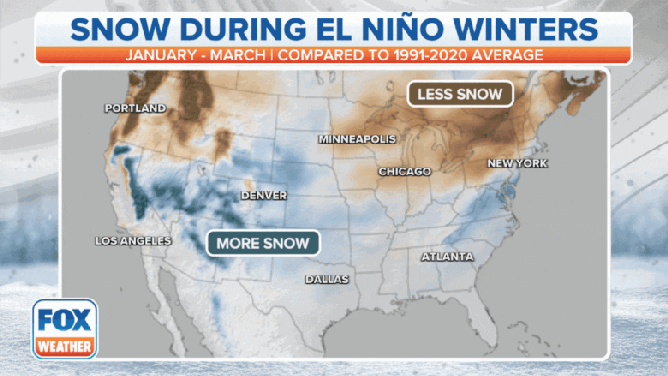
(FOX Weather)
Another sign the El Niño pattern is not following a typical playbook and may be more challenging to forecasters is the amount of tropical activity observed around the globe.
During previous events, at least one ocean has seen a decrease in activity, but that has not been the case in 2023 with above-average tropical cyclone formations in the Atlantic, Pacific and Indian oceans.
Forecasters say episodes of El Niño and La Niña typically last between nine and 12 months, but double- or even triple-dip episodes can prolong the status for years.
What does a 'strong' El Nino mean for your winter weather?
The Climate Prediction Center's Operational Prediction Chief, Jon Gottschalck tells FOX Weather how the current strong El Nino pattern will impact weather in different regions across the country.
Looking back at "historic El Nino" events
Deadly 1997-98 El Niño
Over the winter of 1997-98, the West Coast suffered destructive storm after storm. California alone lost 17 people, and 27 homes were red-tagged, according to the California Coastal Commission. Los Angeles received a record 13.86 inches of rain in February, according to the National Weather Service.
The Los Angeles Times reported that damages totaled over a half-billion dollars.
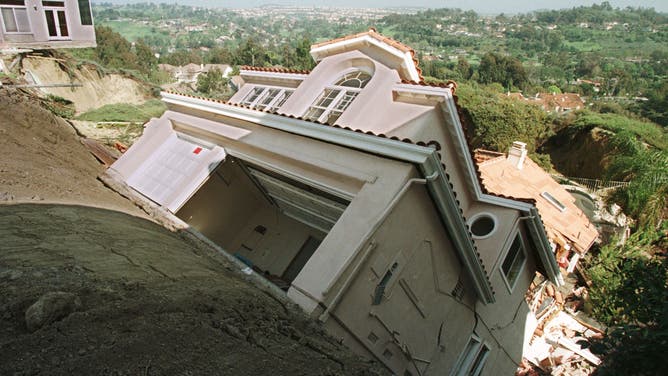
File: A luxury home in the Orange County suburb of Laguna Niguel slips down a hillside March 19, 1998 eroded by heavy El Nino generated rains earlier in the month. Two homes and seven condominiums have been destroyed in the slide and several more are threatened with destruction.
( VINCE BUCCI/AFP / Getty Images)
Crippling 2015-16 El Niño
"January 2016, El Nino, New York City saw the biggest blizzard it's ever had," recalled FOX Weather Meteorologist Amy Freeze.
The city recorded the second-biggest snowstorm in history. A large area of 2 feet of snow fell across the Eastern Seaboard, crippling the Interstate 95 corridor.
Again, the West Coast saw unimaginable erosion.
"The 2015/16 El Niño was one of the strongest of the last 145 years, with winter wave energy equal to or exceeding measured historic maxima all along the Western U.S. coast and anomalously large beach erosion across the region," wrote the commission.
How does 2023 El Nino compare to 2015?
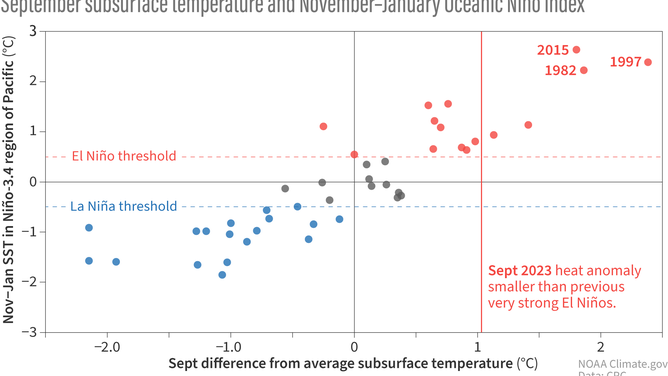
Each dot on this scatterplot shows the subsurface temperature anomaly (difference from the long-term average) in the central tropical Pacific each September (horizontal axis) since 1979 versus the oceanic ENSO conditions the following November–January (vertical axis). The vertical red line show the September 2023 subsurface temperature anomaly. The amount of warmer-than-average water under the surface in September has a strong relationship with the oceanic ENSO conditions later in the year. Previous very strong El Niño events, 1982–83,1997–98, and 2015–16, had more subsurface warm water than 2023.
(Climate.gov / NOAA)
Currently, se- surface temperatures are behind the three historic strong events. The red line shows the above-average subsurface temperatures compared to other El Niño years. So far, 2023 is falling behind the heat of 2015, 1982 and 1997, but don't rule "historic strength" out.
"While there is still a good amount of heat under the surface of the Pacific – this warmer water provides a source to the surface – it’s not quite at the level we’ve seen during previous historically strong El Niños like 1982-83, 1997-98 or 2015-16," Emily Becker, associate director of the University of Miami Cooperative Institute for Marine and Atmospheric Studies, wrote in October.
But, she says, the world has seen record global ocean warmth this year.
